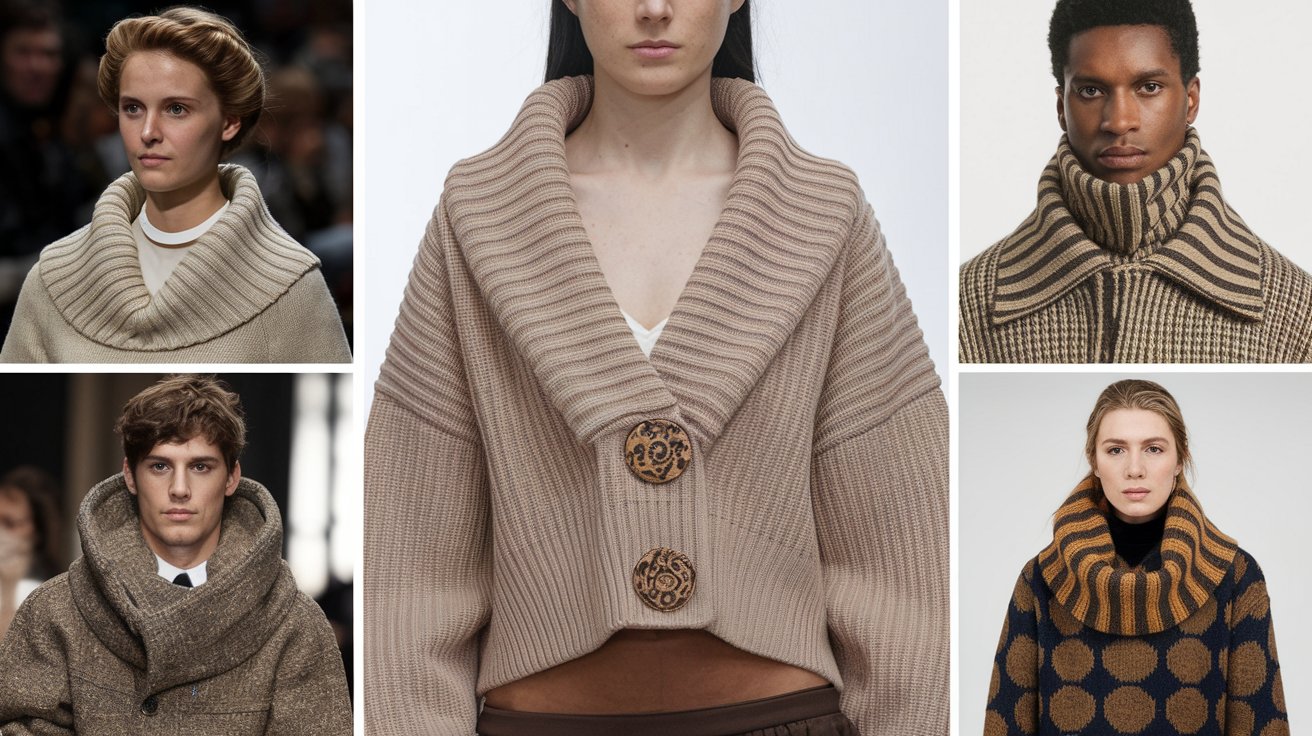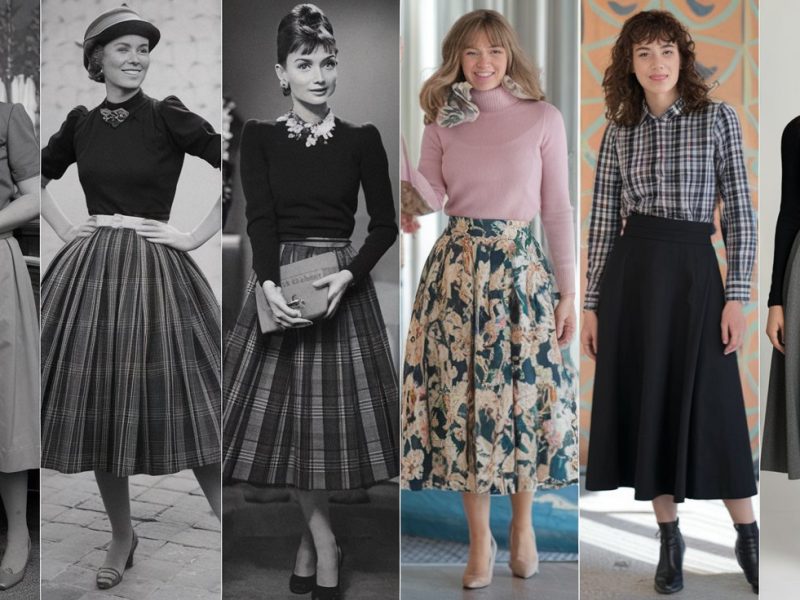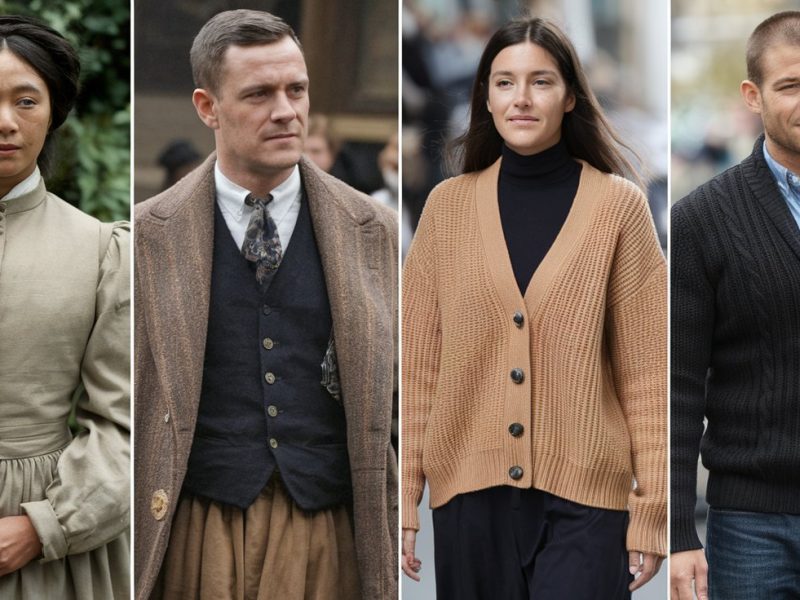The Humble Beginnings of a Craft
Knitwear has been part of human life for thousands of years. While it may seem like a simple form of clothing today, it carries a deep history of invention, skill, and cultural exchange. From the early days when wool was twisted by hand to create warmth in cold climates, to today’s stylish knit collections, the story of knitwear mirrors the progress of society.
Quick Highlights
- Origins in early European communities
- Spread of knowledge through trade
- Blending of technology and tradition
In the Bronze Age, people living in the northern regions of Europe started creating warm garments from sheep wool. The process was simple but clever. It helped communities survive harsh winters. As trade spread across continents, these techniques moved with the people. New methods arrived in different regions, often brought by travelers or merchants.
An interesting tale speaks of a Persian trader who showed people how to make circular-knit socks. This small trick led to greater developments. By the Middle Ages, cities like Venice and Bruges became centers of textile trade. Their markets were filled with unique knit items, such as vests with ocean motifs and socks embroidered with dolphins.
The Machine Age and Greater Access
In the late 1700s, machines changed the way clothing was made. William Lee created a knitting device that produced fabric faster than hands could. His invention was not accepted at first, but it laid the foundation for future advancements.
Factories in England adopted mechanical knitting. One story from Nottingham describes a worker who tried running a knitting machine for an entire day without stopping. This bold move proved it was possible to mass-produce garments quickly. It also meant people could afford warmer clothes during winter.
By the 19th century, these factories had changed how people dressed. Before, only the wealthy had the time or money for fine wool clothing. Now, knit cardigans, pullovers, and scarves became regular items for the middle class. Though early machine-made clothes were plain, fashion trends soon evolved. Art Deco introduced bold, geometric designs that found their way into knitwear patterns.
Design Houses and Artistic Touch
The 1950s gave knitwear a new life. Designers in Paris and Milan began treating it as more than just a fabric. They saw it as a form of personal expression. Some used high-quality fibers like silk blended with wool. Their workshops created sweaters that looked more like wearable canvas pieces than simple garments.
In Milan, one workshop became famous for its floral patterns hand-sewn onto cashmere sweaters. These designs were soft, luxurious, and full of character. Customers lined up in front of boutiques to buy these limited pieces. In their eyes, knitwear had become a statement of identity.
Fashion shows in the U.S. picked up on the movement. A New York model once lost her heels before walking the runway. Even so, her textured knit top stole the attention of the crowd. Critics mentioned the fabric’s depth and structure instead of the missing accessories. This shift in focus reflected how much value people now gave to quality knitwear.
The Fiber Shift: Synthetics Enter
The 1960s and 1970s saw a new wave of materials. Nylon, acrylic, and polyester entered the scene. These synthetic fibers were easier to mass-produce. As a result, knitwear became even more accessible. In big cities like London and Berlin, youth groups embraced these bright, synthetic garments. Neon sweaters with unusual shapes became part of their identity.
While many enjoyed the durability and brightness of these new fabrics, others remained loyal to natural fibers. Wool, alpaca, and cotton continued to be favored by traditional brands. In France, one label introduced eco-friendly knitwear in the late 1970s. They used natural plant dyes and sourced local materials. Their approach stood out in a market flooded with artificial goods.
This pushback from eco-conscious consumers would later shape today’s sustainable fashion movement. Brands began to understand that materials mattered—not just for the planet but for their reputation as well.
Technology Transforms the Craft
The past two decades brought another shift. Digital knitting machines began replacing older, slower systems. These machines could produce seamless garments that reduced fabric waste. Designers appreciated the accuracy and consistency. Manufacturers saw less loss and faster turnaround.
A standout moment came at a fashion event in London, where a model wore a dress knitted entirely by a robotic arm. Its sharp lines and perfect symmetry impressed audiences. Not only was it a technological feat, but it also hinted at a more efficient future for garment production.
Meanwhile, researchers in Japan focused on function over form. They developed knitted clothing with smart features. Some sweaters included sensors that could track the wearer’s temperature. If the body temperature dropped below normal, the clothing sent a signal to a connected mobile app. These smart fabrics are now being tested for medical and sports use.
Clothing with a Message
In recent years, knitwear has become a way for individuals to express what they believe in. Some influencers share how-to guides on social platforms, creating a community of makers. Their followers don’t just copy patterns—they add personal twists, choosing colors and stitches that reflect their mood or culture.
In Asia, especially South Korea and Japan, independent designers are combining traditional elements with modern looks. One student in Seoul created a sweater that merged hanbok ribbons with modern yarns. Her creation gained attention online and in local exhibitions. It proved that heritage and innovation could go hand in hand.
Famous designers also took note. Stella McCartney, for instance, uses recycled fibers in many of her collections. Acne Studios has worked with local producers to ensure ethical sourcing. These decisions show that beauty and responsibility can exist in a single garment.
The Role of Communities and Culture
Global knitwear trends now grow in every direction. In the Amazon, native groups create knit accessories using fruits and plants as natural dyes. Their work not only brings income but also helps preserve ancestral knowledge. In Canada, Indigenous artists weave symbols into their pieces, telling stories about land, family, and history.
In Italy, small towns continue using centuries-old techniques. Some families have worked with wool for generations. In Scandinavia, cold winters have led to designs that prioritize warmth and utility. Patterns are often simple, but the craftsmanship is precise.
African designers offer a different style—bold, colorful, and rich with meaning. Knitwear from this region often reflects traditions passed through dance, language, and celebration. Each pattern carries history, and every piece has a story to tell.
International groups are helping amplify these voices. Organizations that support ethical production and regional crafts are now partnering with small studios worldwide. Their work ensures that these knitting traditions aren’t lost but instead celebrated on global stages.
Threading the Past with the Future
Knitwear continues to evolve, blending past and present. What once started as a basic need is now a symbol of care, skill, and innovation. From hand-spun wool to computer-guided machines, each stage in its history marks a change in how we think about clothing.
Looking forward, the future of knitwear seems promising. Smarter fabrics, better materials, and respectful sourcing are driving new ideas. The people who wear and make these garments are no longer just consumers or workers—they are part of a global story built stitch by stitch.


